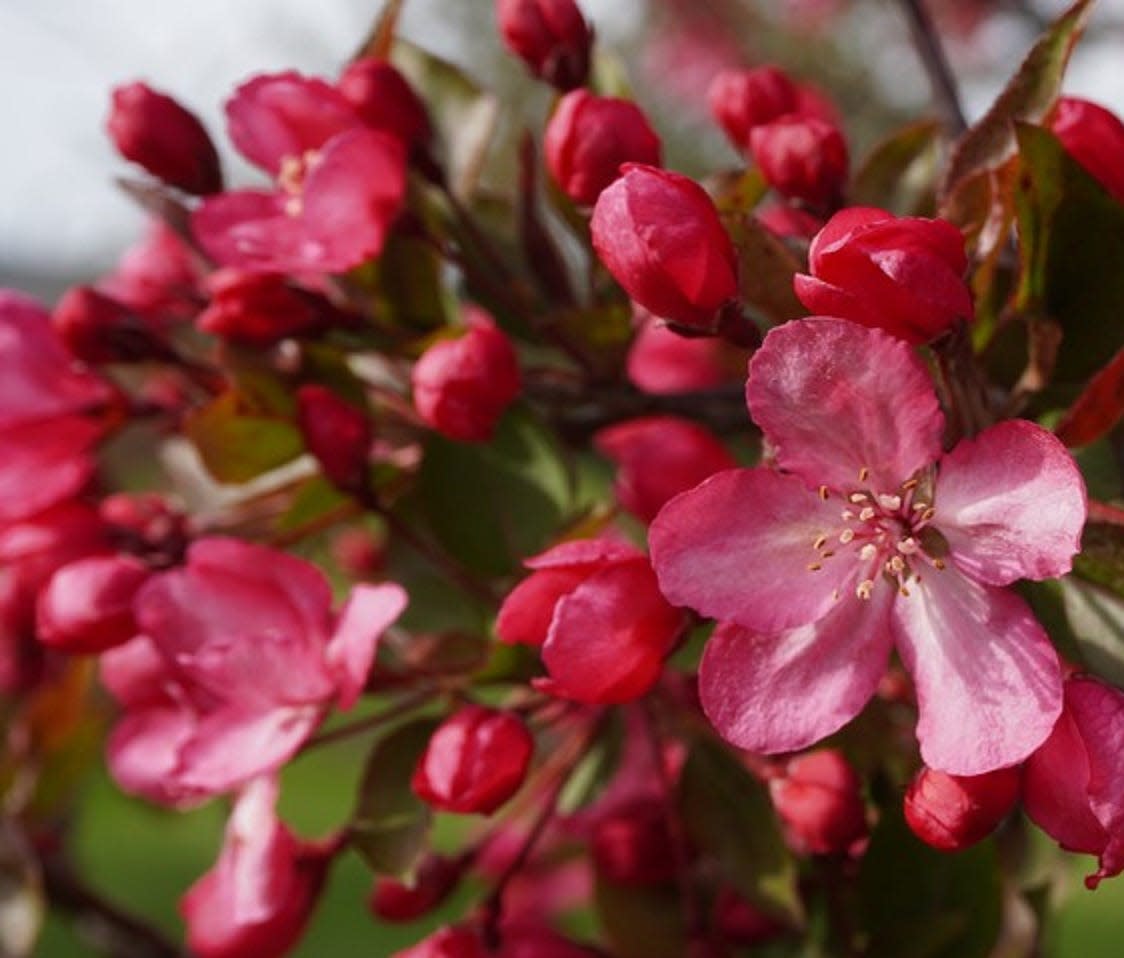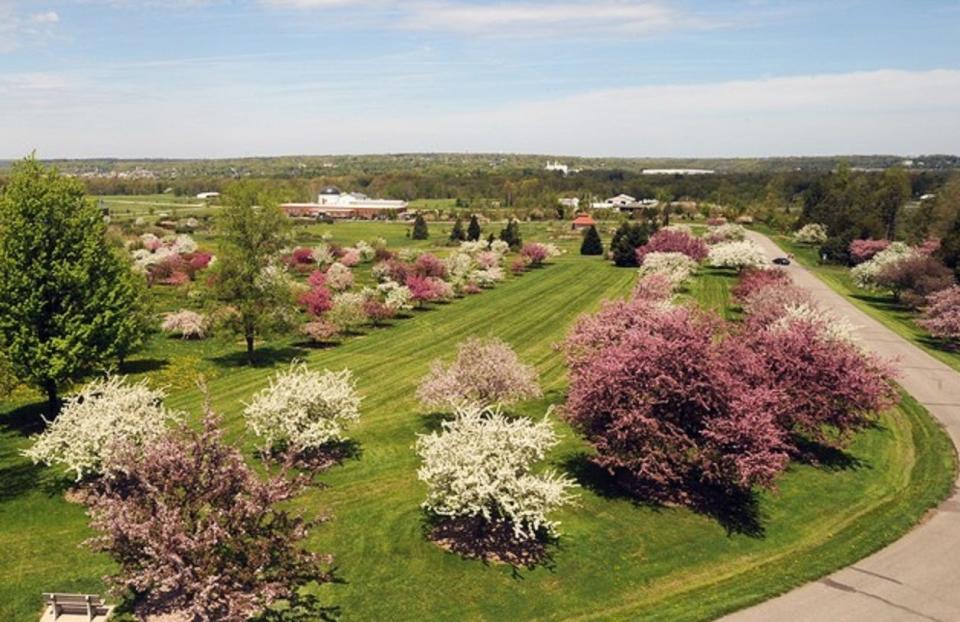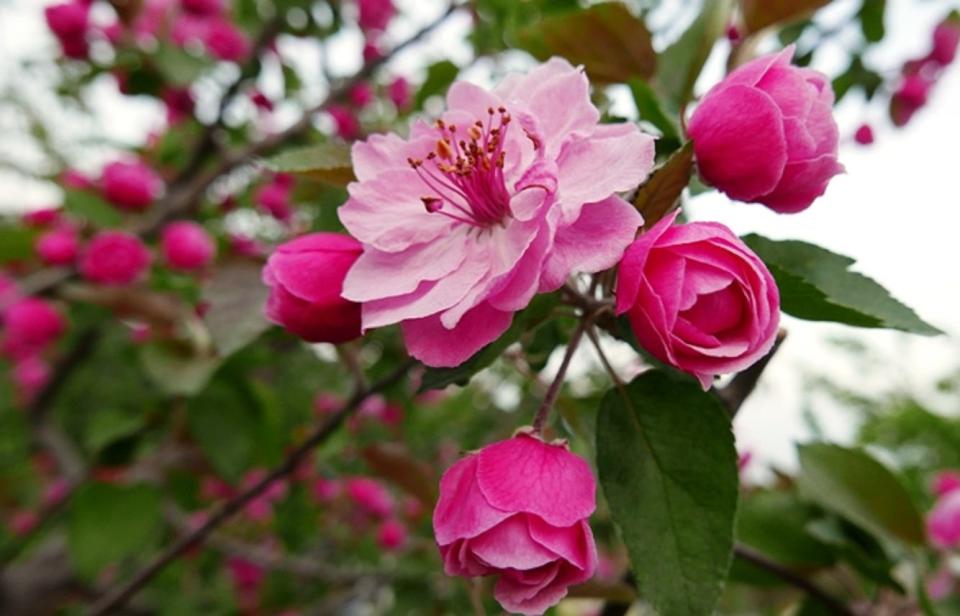Crabapple trees can add color to your home landscape this spring

Spring is little more than a week away and while we have already seen some of the first spring colors in the landscape in the form of early blooming spring flowers and hellebores, it won’t be long before an explosion of spring color bursts forth from the canopies of blossoming spring flowering trees such as dogwood, redbud, magnolia, fringe tree, and others. But the star of this colorful show for me is the venerable crabapple, with its billowy branches of brightly colored petals in shades of red, pink, white, coral, and salmon.
If your home landscape doesn’t include at least one showy crabapple, early spring will be the perfect time to plant one, especially if you need to replace the early spring blossoms of Callery pear (Pyrus calleryana), which should be removed from the landscape due to its aggressive and invasive growth habit.

Crabapples perfect for home landscape
A crabapple (Malus sylvestris) is defined as an apple that at maturity is less than two inches in diameter. This deciduous tree is typically found growing in the wild in wooded areas containing oak trees, and serves as a food source for birds and other wildlife. Crabapples are native to North America and Asia.
Crabapple trees are grown by gardeners and homeowners in Greater Columbus for their attractive growth habit, manageable size, spring flower display, and decorative fruits. The fruits are much smaller and tarter than the common apple (Malus domestica), but can be used to make jellies, preserves, sauces and even cider.
Most varieties of crabapples are a medium size tree, growing to a height of 15 to 20 feet tall at maturity, making them perfect for small yards and locations close to structures.
More from Hogan:Tips and tricks for growing a luminous moon garden
Site requirements
Crabapples are very adaptable to many soil and environmental conditions and thrive in moist, loamy soils that are slightly acidic with a pH of 5.0 to 6.5. Good drainage is a requirement for crabapples, so avoid planting this tree in low spots and other locations in the landscape where water collects and puddles following a rain.

While mature crabapples can survive droughty conditions during the summer, like most trees, the first year or two after planting is critical to root development and long-term survival of these trees. Because of this, consider providing supplemental irrigation during dry periods during the first season or two after planting.
Many varieties to choose from
There are hundreds of different varieties of crabapples on the market that gardeners and homeowners can choose from with a variety of growth habits, including a weeping spreading form, small spreading form and large spreading form.
Some of my personal favorite varieties include Adirondack, with its white flowers and more upright form; Prairiefire, with spectacular coral-pink flowers and purple-colored fruits in autumn; and Strawberry Parfait, which boast vivid pink-red flowers and an erratic branching pattern.
More trees to consider:How to grow a pawpaw tree at home

When choosing a crabapple, look for a variety with resistance to apple scab, which is a fungal disease that affects many varieties of crabapple throughout Ohio, especially when wet and humid weather persists. While apple scab does not kill crabapples, it does cause the foliage to yellow and fall from the tree prematurely, sometimes as early as July.
The road to Crablandia
When crabapples are in full bloom this spring, consider taking a road trip to Wooster, 90 miles north of Columbus, where you can walk or drive through a large planting of crabapple varieties known as Crablandia, on the Wooster Campus of The Ohio State University. This planting of crabapples is part of the Secrest Arboretum on campus and is a varietal test site for the International Ornamental Crabapple Society. Admission to the arboretum is free.
Mike Hogan is Extension educator, Agriculture and Natural Resources, and associate professor with Ohio State University Extension. hogan.1@osu.edu
This article originally appeared on The Columbus Dispatch: Early spring is a good time to plant crabapple trees

